What is Gnosticism?
Gnosticism, a multifaceted religious and philosophical movement that flourished in the early centuries of the Common Era, has captivated the minds of spiritual seekers and scholars alike. Originating in the Mediterranean region, Gnosticism derived its name from the Greek word “gnosis,” signifying an intimate, experiential knowledge of the divine. This ancient wisdom tradition sought to address the fundamental questions of human existence, the nature of the divine, and the path to spiritual liberation.
At the heart of Gnostic thought lies a profound sense of duality—a cosmic struggle between the immaterial, spiritual realm and the material world in which humanity finds itself entangled. Gnostics posit that the visible universe is the creation of an imperfect or malevolent entity known as the Demiurge, who is often identified with the God of the Old Testament. This Demiurge, they argue, is not the true, ultimate God, but rather a lesser emanation or a fallen being who has entrapped divine sparks within the confines of matter.
According to Gnostic teachings, human beings are essentially divine spirits trapped within physical bodies, yearning to break free from the shackles of the material realm and reunite with the supreme, unknowable God. This divine spark, present within each individual, is the key to unlocking the path to spiritual enlightenment and salvation. Gnostics believe that through the acquisition of gnosis—a profound, transformative knowledge of the self, the divine, and the true nature of reality—one can transcend the illusions of the material world and attain liberation.
Gnosticism encompasses a rich tapestry of schools, each with its unique interpretations and practices. The Sethians, named after the biblical figure Seth, emphasized the role of a divine redeemer who imparts secret knowledge to the chosen few. Valentinianism, founded by Valentinus, developed a complex cosmology involving divine emanations called Aeons and the concept of the Demiurge. Manichaeism, an influential Gnostic movement that spread across the ancient world, combined elements of Christianity, Buddhism, and Zoroastrianism, teaching a dualistic cosmology and the necessity of a spiritual battle against darkness.
Gnostic traditions often employed various techniques to facilitate the attainment of gnosis. These included the study of esoteric texts, such as the Nag Hammadi library, which contained previously unknown Gnostic gospels and treatises. Gnostics engaged in contemplative practices, including meditation, prayer, and the use of sacred symbols and rituals, to cultivate a direct, experiential connection with the divine. Some Gnostic schools also emphasized the importance of asceticism, believing that by renouncing worldly desires and attachments, one could purify the soul and prepare it for the journey back to the divine source.
Gnosticism emerged when Christianity was still in its infancy, and it posed significant philosophical challenges to the developing orthodox doctrines. Gnostics questioned the idea of a benevolent, all-powerful God who would create a world filled with suffering and evil. They sought to resolve this tension by distinguishing between the true, transcendent God and the lesser, imperfect Demiurge responsible for the material realm. Gnosticism also challenged the Christian notion of Jesus as both fully human and fully divine, instead emphasizing his role as a spiritual guide who imparted salvific knowledge to his followers.
While Gnosticism was ultimately branded as heretical by the early Christian church, its ideas have continued to influence Western thought and spirituality. The Gnostic emphasis on personal experience, self-knowledge, and the quest for hidden wisdom has resonated with philosophers, mystics, and seekers throughout history. From the Neoplatonists to the Kabbalists, from the medieval Cathars to the modern New Age movement, Gnostic themes have found expression in various spiritual and intellectual traditions.
In the 20th century, the discovery of the Nag Hammadi library in Egypt shed new light on the diversity and complexity of Gnostic thought. Scholars such as Hans Jonas, Elaine Pagels, and Kurt Rudolph have sought to untangle the intricate web of Gnostic ideas and place them in their historical and philosophical context. Their work has contributed to a renewed interest in Gnosticism as a legitimate field of study and a valuable resource for those seeking alternative perspectives on spirituality and the human condition.
Influential Ideas of Gnosticism
Dualism:
Gnosticism is characterized by a strong dualistic worldview, which posits a fundamental opposition between the spiritual and material realms. According to this belief, the spiritual realm is associated with light, goodness, and truth, while the material world is seen as a dark, corrupt, and imprisoning domain. Gnostics view the material universe as a flawed creation, a realm of ignorance and suffering that is far removed from the perfect, transcendent realm of the divine. This dualistic perspective shapes the Gnostic understanding of the human condition, as the soul is seen as a divine spark trapped within the confines of the physical body, yearning to break free from the shackles of materiality and return to its spiritual source.
The Demiurge:
Central to Gnostic cosmology is the concept of the Demiurge, an imperfect or evil creator god who is responsible for the formation of the material world. The Demiurge is often portrayed as an inferior, ignorant, or malevolent being who acts independently of the true, supreme God. In many Gnostic texts, the Demiurge is identified with the God of the Old Testament, Yahweh, who is seen as a jealous, wrathful, and oppressive figure. Gnostics believe that the Demiurge, in his ignorance and arrogance, created the material universe as a flawed imitation of the spiritual realm, trapping divine sparks within the world of matter. This concept of the Demiurge helps to explain the existence of evil and suffering in the world, as well as the Gnostic desire to escape from the clutches of the material realm.
Divine Sparks:
Gnostics believe that human beings contain within themselves a divine spark, a fragment of the true, transcendent God that has become trapped within the material world. This divine spark is the essence of the human soul, the part of the self that is eternal, pure, and capable of spiritual awakening. The divine spark is seen as a kind of inner light or knowledge that, when activated, can lead the individual towards gnosis, or divine understanding. Gnostics hold that the ultimate goal of human existence is to recognize and nurture this divine spark, allowing it to grow and ultimately facilitating the soul’s return to its divine source. This process of spiritual awakening and liberation is central to Gnostic practice, as individuals seek to free themselves from the chains of materiality and reunite with the divine.
Hidden Knowledge:
The pursuit of hidden knowledge, or gnosis, is a defining feature of Gnosticism. Gnostics believe that true spiritual understanding cannot be attained through ordinary means, such as rational inquiry or blind faith, but rather requires a direct, experiential encounter with the divine. This hidden knowledge is thought to be encoded within esoteric teachings, mystical practices, and secret texts that are accessible only to those who have been initiated into the Gnostic path. Gnostic schools often emphasized the importance of studying and interpreting these sacred texts, such as the Nag Hammadi library, which contained a wealth of Gnostic gospels and treatises. Through the acquisition of gnosis, individuals were believed to gain insight into the nature of reality, the divine plan, and their own spiritual identity, enabling them to break free from the cycle of ignorance and suffering and attain spiritual liberation.
Gnostic ideas have had a significant influence on various philosophical and religious movements throughout history, including Neoplatonism, Hermeticism, and even modern psychology, as seen in the works of Carl Jung.
While Gnosticism itself largely faded away by the 6th century CE, its ideas and themes continue to resonate with seekers of spiritual knowledge and those interested in alternative approaches to religion and spirituality.
Timeline of the major events in the history of Gnosticism:
1st century CE:
- Gnostic ideas begin to emerge in the Mediterranean region, influenced by Jewish, Christian, and Greco-Roman philosophical traditions.
- Simon Magus, considered by some to be the first Gnostic, is active in Samaria.
2nd century CE:
- Basilides, an early Gnostic teacher, establishes a school in Alexandria, Egypt.
- Valentinus, a prominent Gnostic thinker, teaches in Alexandria and Rome, developing a complex cosmology and attracting a large following.
- Marcion, a influential figure in early Christianity, proposes a dualistic theology that distinguishes between the God of the Old Testament and the God of the New Testament.
3rd century CE:
- Mani, the founder of Manichaeism, begins his teaching in Persia, synthesizing elements of Gnosticism, Christianity, Buddhism, and Zoroastrianism.
- The Nag Hammadi library, a collection of Gnostic texts, is believed to have been compiled and buried in Egypt.
- Gnosticism faces increasing opposition from early Christian church leaders, who denounce it as heretical.
4th century CE:
- The Nag Hammadi library is hidden, possibly to protect the texts from destruction during a time of increased persecution of Gnostic groups.
- Gnosticism begins to decline as a distinct movement, with many of its ideas being absorbed into other religious and philosophical traditions.
5th-6th centuries CE:
- The Mandaeans, a Gnostic-influenced religious group, emerge in the region of Iraq and Iran.
- Gnosticism largely disappears as a distinct religious movement in the Mediterranean world, although some of its ideas persist in various forms.
20th century CE:
- The Nag Hammadi library is rediscovered in Egypt in 1945, sparking a renewed interest in Gnosticism among scholars and spiritual seekers.
- The discovery of the Nag Hammadi texts leads to a reassessment of early Christian history and the relationship between Gnosticism and orthodox Christianity.
21st century CE:
- Gnostic ideas continue to influence contemporary spirituality, philosophy, and popular culture.
- Scholars continue to study and debate the origins, teachings, and legacy of Gnosticism, shedding new light on this complex and fascinating religious movement.
What are the Components of the Gnostic Cosmology:
The Divine Spark:
The concept of the “divine spark” is a central tenet of Gnostic thought, representing the seed of spiritual light that lies dormant within the human soul. According to Gnostic teachings, this divine spark is a fragment of the true, unknown God that has become trapped within the material world as a result of the fall of Sophia and the creation of the Demiurge. The divine spark is often depicted as a precious pearl hidden within the depths of the self, waiting to be discovered and nurtured through the pursuit of gnosis. Gnostic texts emphasize the idea that each individual contains within themselves the potential for spiritual awakening and divine consciousness, and that the ultimate goal of human existence is to liberate this divine spark and reunite it with its source in the Pleroma. The awakening of the divine spark is seen as a process of self-discovery and inner transformation, requiring the confrontation of one’s shadow self and the integration of the divided aspects of the psyche. Through practices such as meditation, contemplation, and the study of sacred texts, Gnostics seek to cultivate the divine spark within and to attain a direct, experiential knowledge of the divine. The concept of the divine spark thus represents the Gnostic view of the human being as a microcosm of the divine, containing within itself the key to spiritual liberation and the potential for ultimate unity with the godhead.
The Self as a Microcosm:
Closely related to the idea of the divine spark, the concept of “the self as a microcosm of the divine” is another fundamental principle of Gnostic thought. This notion suggests that each individual human being contains within themselves the entirety of the spiritual universe, a reflection of the divine realm in miniature. Just as the Pleroma is composed of a complex hierarchy of Aeons and emanations, the human soul is seen as a multi-layered entity, encompassing a range of spiritual potentials and faculties. In Gnostic teachings, the process of spiritual awakening involves the gradual unfolding and integration of these inner dimensions, leading to a state of wholeness and unity that mirrors the harmony of the Pleroma. The idea of the self as a microcosm also implies a deep interconnectedness between the individual and the cosmos, a sense that the journey of self-discovery is simultaneously a journey into the heart of the divine mystery. By exploring the depths of one’s own being, the Gnostic seeker comes to understand the nature of reality itself, and to participate directly in the unfolding of the cosmic drama. This concept challenges the notion of a strict separation between the human and the divine, suggesting instead a fluid and dynamic relationship in which the self becomes a vessel for the expression of divine creativity and wisdom. The Gnostic vision of the self as a microcosm thus invites a profound reimagining of human identity and potential, pointing the way towards a more integrated and spiritually awakened way of being in the world.
The True God:
At the pinnacle of the Gnostic cosmology is the true, unknown God, the source of all being and the ultimate goal of spiritual aspiration. This God is often depicted as a radiant light, an unfathomable abyss, or a profound silence, beyond the grasp of human understanding and language. The true God is not the creator of the material world, but rather the source of the spiritual realm, the Pleroma, from which all divine emanations and spiritual beings originate. In Gnostic thought, the true God is often seen as remote and inaccessible, requiring the intervention of intermediary figures and the attainment of gnosis to bridge the gap between the human soul and the divine. The true God is also associated with qualities such as unity, wholeness, and transcendence, in contrast to the divided and conflicted nature of the material world. For Gnostics, the ultimate aim of spiritual practice is to awaken the divine spark within the self and to achieve a direct, unmediated experience of the true God, leading to liberation from the cycle of ignorance and suffering.
The Aeons and the Pleroma:
In Gnostic cosmology, the Aeons are celestial beings that emanate from the true, unknown God and form the Pleroma, the fullness of the spiritual realm. The Aeons are often portrayed as divine couples, such as Logos and Life, Anthropos and Ecclesia, and Christos and Sophia, each representing a different aspect of divine reality. These divine emanations are seen as the building blocks of the spiritual universe, and their interactions and relationships shape the unfolding of cosmic history. The Pleroma is depicted as a realm of light, harmony, and spiritual perfection, in contrast to the chaos and darkness of the material world. Gnostic texts often describe the Pleroma as the true home of the human soul, the place of origin to which the divine spark within each individual yearns to return. The journey of the soul through the material world is seen as a process of awakening and remembering its true nature, leading ultimately to a reunion with the Pleroma and a merging with the divine. The Aeons and the Pleroma thus represent the ideal state of spiritual wholeness and unity that Gnostics seek to attain through the pursuit of gnosis and the liberation of the divine spark within.
Sophia and the Fall:
Sophia, whose name means “Wisdom” in Greek, is a central figure in Gnostic mythology, representing the divine feminine principle and the embodiment of spiritual knowledge. According to many Gnostic texts, Sophia was one of the Aeons, a celestial being who emanated from the true, unknown God. However, in a moment of confusion or passion, Sophia fell from grace and gave birth to the Demiurge, the imperfect creator of the material world. This event is often referred to as the “fall of Sophia,” and it sets in motion the creation of the physical universe and the entrapment of divine sparks within matter. In some Gnostic texts, Sophia’s fall is seen as a tragic mistake, a result of her desire to know the unknowable or to create something apart from the divine source. In others, her fall is portrayed as a necessary step in the unfolding of cosmic history, leading ultimately to the redemption of the divine sparks and the restoration of spiritual wholeness. Sophia’s story is often interpreted as a metaphor for the human condition, representing the soul’s descent into the world of matter and its yearning for spiritual enlightenment and reunion with the divine. Through her suffering and her eventual redemption, Sophia becomes a symbol of hope and a guide for those seeking to awaken the divine spark within themselves and return to the Pleroma.
The Demiurge:
The Demiurge is a central figure in Gnostic cosmology, representing the imperfect or malevolent creator of the material world. In many Gnostic texts, the Demiurge is portrayed as a lower, ignorant deity who fashions the physical universe as a flawed imitation of the spiritual realm. The Demiurge is often depicted as an arrogant and jealous being, who believes himself to be the true God and who seeks to keep humanity enslaved in the world of matter. In some Gnostic traditions, the Demiurge is identified with the God of the Old Testament, Yahweh, who is seen as a tyrannical and oppressive figure, in contrast to the loving and compassionate God of the New Testament. The Demiurge is associated with the forces of darkness, ignorance, and suffering that characterize the material world, and his creation is seen as a trap or prison for the divine sparks that have fallen from the Pleroma. Gnostic teachings often emphasize the need to break free from the Demiurge’s control, to reject the false values and beliefs of the material world, and to seek the saving knowledge (gnosis) that can liberate the soul from its bondage. The figure of the Demiurge thus represents the Gnostic view of the world as a place of ignorance and illusion, and the need for spiritual awakening and transcendence to achieve true liberation.
Gnostic Savior Figures:
Gnostic texts feature a variety of spiritual guides and savior figures who play crucial roles in imparting the saving knowledge (gnosis) that can awaken the divine spark within humanity and guide the soul back to its true home in the Pleroma. These savior figures often take on different forms and names, depending on the specific Gnostic tradition. In Christian Gnosticism, Jesus is often portrayed as a divine messenger who comes to reveal the true nature of reality and to offer a path to spiritual liberation. However, the Gnostic Jesus is distinct from the Jesus of orthodox Christianity, as he is seen primarily as a teacher of esoteric wisdom rather than a sacrificial savior. In other Gnostic traditions, figures such as Seth (the third son of Adam and Eve), the serpent of Eden, and various prophets and sages are depicted as bringers of gnosis, challenging the false teachings of the Demiurge and guiding humanity towards spiritual awakening. These savior figures often act as intermediaries between the human soul and the divine realm, bridging the gap created by the fall of Sophia and the creation of the material world. They provide the keys to unlocking the hidden knowledge within the self and offer a path to transcendence and reunion with the divine. The role of Gnostic savior figures is thus to awaken humanity to its true spiritual nature and to guide the soul on its journey of liberation from the bondage of matter.
Key Ideas in Gnosticism:
Rejection of the Material World:
One of the most prominent key ideas in Gnosticism is the rejection of the material world as a domain of ignorance and suffering, a realm ruled by the false god of the Demiurge. Gnostics view the physical universe as a trap or prison for the divine sparks that have fallen from the Pleroma, the realm of divine fullness. They believe that the material world is an illusion, a shadow of the true spiritual reality, and that it serves only to keep humanity enslaved in a cycle of darkness and ignorance. Gnostics seek to break free from the limitations and illusions of the material world through the pursuit of spiritual knowledge and awakening, which they believe will ultimately lead to liberation from the bondage of matter and a return to the divine source.
Reincarnation and Cyclical Existence:
Another central idea in Gnosticism is the belief in reincarnation and the cyclical nature of existence. Many Gnostic texts suggest that the soul undergoes a series of incarnations in the material world, each presenting an opportunity for growth and the eventual attainment of gnosis, or divine knowledge. This cyclical view of time and existence stands in contrast to the linear, historical perspective of orthodox Christianity, which emphasizes a single life followed by eternal judgment. The Gnostic understanding of reincarnation reflects their emphasis on the timeless, eternal nature of the divine, and the idea that the soul’s journey of awakening and liberation unfolds across multiple lifetimes.
Mythological and Allegorical Language:
Gnostic teachings make extensive use of mythological and allegorical language to convey spiritual truths. They employ a rich array of symbols, archetypes, and narrative structures to illuminate the nature of reality and the path to liberation. Gnostic myths often involve complex cosmologies, featuring divine emanations, fallen gods, and cosmic battles between light and darkness. These mythological elements are not meant to be taken literally, but rather serve as metaphors and allegories for the spiritual journey of the soul. The use of myth and metaphor in Gnostic teachings reflects their view of language as a vehicle for the transmission of esoteric wisdom, a means of pointing beyond itself to the ineffable truths of the divine.
The Foundation of the Gnostic Worldview:
Taken together, these key ideas form the foundation of the Gnostic worldview, a powerful and enduring vision of the human condition and the possibilities of spiritual transformation. The rejection of the material world, the belief in reincarnation and cyclical existence, and the use of mythological and allegorical language all contribute to a unique perspective on the nature of reality and the path to spiritual liberation. This worldview emphasizes the inner journey of self-discovery, the awakening of the divine spark within, and the ultimate goal of reuniting with the divine source. While Gnosticism encompasses a diverse range of traditions and teachings, these core ideas provide a unifying framework for understanding the Gnostic approach to spirituality and the human experience.
What are Historical Schools of Gnosticism?:
Sethianism
Named after the biblical figure Seth, believed in a supreme God and a lower, evil creator god called the Demiurge. This school held that the material world was created by the Demiurge, while the spiritual realm was the domain of the supreme God. Sethians believed that Seth was a divine figure who possessed secret knowledge (gnosis) that could lead to salvation. Key texts associated with Sethianism include the Apocryphon of John, which describes the creation of the world and the fall of humanity, and the Gospel of Judas, which portrays Judas Iscariot as a hero who helped Jesus fulfill his divine mission.
Valentinianism
Founded by Valentinus, emphasized the concept of divine emanations called Aeons. These Aeons were believed to be manifestations of the divine, with each Aeon representing a different aspect of the supreme God. Valentinians also incorporated the idea of the Demiurge, a lower creator god responsible for the material world. The school taught that the path to salvation lay in understanding the nature of the Aeons and one’s own spiritual identity. The Gospel of Truth and the Gospel of Philip are associated with Valentinianism and explore themes of divine love, spiritual marriage, and the attainment of gnosis.
Marcionism
Founded by Marcion of Sinope, rejected the Old Testament and the God of the Jews, believing in a separate, higher God revealed through Jesus Christ. Marcion taught that the God of the Old Testament was a lesser, vengeful deity, while the God of the New Testament was a God of love and mercy. He believed that Jesus was not the son of the Old Testament God but rather a manifestation of the higher God. Marcionites rejected the Old Testament and compiled their own canon of scriptures, which included a modified version of the Gospel of Luke and ten of Paul’s epistles.
Manichaeism
Founded by the Persian prophet Mani, combined elements of Gnosticism, Christianity, Buddhism, and Zoroastrianism. This school emphasized a dualistic cosmology, teaching that the universe was a battleground between the forces of light and darkness. Manichaeism held that the material world was created by the evil principle, while the spiritual realm was the domain of the good principle. Followers of Mani believed that through a combination of faith, asceticism, and ritual practices, they could liberate the particles of light trapped within themselves and the world, ultimately achieving salvation.
Mandaeism
An ancient Gnostic religion that reveres John the Baptist and rejects Jesus. It is the only surviving Gnostic religion, with small communities still practicing in Iraq and Iran. Mandaeans believe in a supreme God, known as the “Great Life” or “King of Light,” and a hierarchy of divine beings called Uthra. They hold that the material world is the creation of a lesser, evil being called Ptahil. Mandaeans practice baptism, which they believe cleanses the soul and helps to liberate it from the material world. Their sacred texts include the Ginza Rba and the Book of John.
Basilideans
Founded by Basilides of Alexandria, taught a complex cosmology involving divine emanations. According to Basilides, the supreme God created a series of divine beings, or Archons, who in turn created the material world. He also introduced the concept of reincarnation, believing that the soul must go through a series of incarnations before it can attain spiritual perfection and return to the divine realm. Basilides emphasized the importance of spiritual knowledge and the need for individuals to overcome their attachment to the material world.
Thomasine Gnosticism
Associated with the Gospel of Thomas, emphasized the importance of personal spiritual experience and the attainment of hidden knowledge. This school held that salvation came through understanding the secret teachings of Jesus, which were believed to be preserved in the Gospel of Thomas. Thomasine Gnostics rejected the idea of a physical resurrection, instead focusing on the attainment of spiritual enlightenment in the present life. They believed that by turning inward and discovering the divine spark within themselves, individuals could achieve union with the divine and escape the cycle of reincarnation.
Gnosticism has had a significant influence on various philosophies and movements throughout history::
Neoplatonism:
This philosophical movement, which emerged in the 3rd century CE, incorporated Gnostic ideas about the nature of reality, the divine, and the human soul. Neoplatonists such as Plotinus and Porphyry explored concepts similar to Gnostic emanations and the ascent of the soul towards the divine.
Hermeticism:
This philosophical and religious tradition, based on the writings attributed to Hermes Trismegistus, shares some common ground with Gnosticism, particularly in its emphasis on attaining spiritual knowledge and the idea of the divine spark within humans.
Kabbalah:
This esoteric Jewish mystical tradition has some parallels with Gnosticism, particularly in its concept of divine emanations (Sefirot) and the idea of the soul’s journey towards spiritual enlightenment.
Alchemy:
Some alchemical traditions, particularly in the Middle Ages and Renaissance, incorporated Gnostic ideas about the transformation of the soul and the attainment of spiritual perfection.
Rosicrucianism:
This esoteric Christian movement, which emerged in the 17th century, drew upon Gnostic ideas about hidden knowledge and spiritual enlightenment.
Theosophy:
This esoteric philosophical movement, founded by Helena Blavatsky in the late 19th century, incorporated some Gnostic concepts into its teachings, such as the idea of a divine spark within humans and the concept of spiritual evolution.
Jungian Psychology:
Carl Jung’s theories of the collective unconscious, archetypes, and individuation were influenced by Gnostic ideas about the nature of the psyche and the quest for spiritual wholeness.
New Age Movement:
Some aspects of the New Age movement, which emerged in the 1970s, have been influenced by Gnostic ideas about spiritual growth, hidden knowledge, and the idea of a higher, divine reality beyond the material world.
What Can Gnosticism Teach Us about Our Psychology?
Archetypes
The Gnostic pantheon, populated by a complex array of divine beings known as Aeons and archons, bears a striking resemblance to the Jungian conception of archetypes. These universal patterns and symbols, which shape human experience and behavior, find their mythological counterparts in the Gnostic cosmology, where they are personified as celestial entities engaged in a cosmic drama of fall and redemption. By exploring the parallels between Gnostic mythology and depth psychology, we can gain a deeper understanding of the archetypal forces that influence our lives and the collective unconscious that binds humanity together.
Gnosticism also sheds light on the psychological dynamics that underlie cults and conspiracy theories. The Gnostic emphasis on the attainment of hidden knowledge and the rejection of mainstream religious and societal norms can be seen as a precursor to the kind of thinking that often attracts individuals to cultic groups and conspiratorial ideologies. These individuals, often driven by a sense of alienation and a yearning for meaning and belonging, may find solace in the promise of exclusive access to esoteric truths and the sense of community provided by like-minded believers. By understanding the psychological needs that drive people towards these fringe beliefs, we can develop more effective strategies for promoting critical thinking and media literacy.
Trauma
Moreover, the Gnostic narrative of the fall of Sophia, the divine wisdom, and the subsequent entrapment of divine sparks in the material realm, offers a powerful metaphor for the experience of trauma. Just as the divine light is shattered and dispersed in the Gnostic myth, so too can the human psyche be fragmented and disoriented by traumatic events. The Gnostic path of spiritual awakening, which involves the gradual recovery and reintegration of the divine spark, mirrors the process of healing and wholeness that is at the heart of trauma recovery. By engaging with Gnostic symbols and ideas, trauma survivors and their therapists can find a language and a framework for understanding the profound disorientation and loss of meaning that often accompanies traumatic experiences.
Gnosticism also offers valuable perspectives on the philosophical tensions that have long plagued Western thought, particularly the relationship between spirit and matter, good and evil, and the nature of the divine. Gnostic dualism, which posits a sharp distinction between the transcendent realm of the divine and the corrupt world of matter, challenges us to confront the problem of evil and suffering in a world purportedly created by a benevolent God. By identifying the material world as the creation of a lesser, ignorant deity known as the Demiurge, Gnosticism offers a way of reconciling the existence of evil with the notion of a supreme, all-good God.
Hierarchy and Responsibility
At the same time, Gnosticism’s emphasis on the inner journey of self-discovery and the direct experience of the divine within oneself offers a powerful critique of institutional religion and the dangers of spiritual authority vested in external figures or structures. By encouraging individuals to seek truth and meaning through their own inner exploration, rather than through blind adherence to dogma or tradition, Gnosticism promotes a kind of spiritual autonomy and free inquiry that is essential for the health and vitality of any society.
However, it is important to recognize that Gnosticism, like any spiritual or philosophical system, is not without its own potential pitfalls and limitations. The Gnostic tendency towards dualism and the rejection of the material world can, if taken to extremes, lead to a kind of spiritual elitism and a denial of the value and significance of embodied existence. Similarly, the emphasis on hidden knowledge and the attainment of esoteric truths can sometimes foster a sense of exclusivity and a disconnection from the broader concerns of society.
Ultimately, the value of Gnosticism lies not in its ability to provide definitive answers to life’s deepest questions, but rather in its capacity to provoke reflection, to challenge assumptions, and to inspire a spirit of open-ended inquiry. By engaging with the rich symbolism and mythological narratives of Gnosticism, we can expand our understanding of the human psyche, the nature of reality, and the possibilities of spiritual transformation. At the same time, we must approach these ideas with a critical and discerning eye, recognizing both their potential insights and their limitations.
The Gnostic tradition, with its emphasis on self-knowledge, inner awakening, and the integration of the shadow aspects of the self, offers a powerful set of tools for navigating the complexities of the modern world. By drawing on the wisdom of this ancient spiritual tradition, we can cultivate a deeper understanding of ourselves and the world around us, while also remaining grounded in the practical realities of daily life. Ultimately, the Gnostic path is one of balance, discernment, and the ongoing pursuit of wisdom and understanding, both within ourselves and in the larger world of which we are a part.
Gnosticism and Psychotherapy:
Several philosophical and psychotherapeutic models share similarities with Gnosticism and have been influenced by its ideas and techniques. These models often focus on self-knowledge, personal growth, and the exploration of the inner world as a means of achieving wholeness and spiritual enlightenment.
Jungian Psychology:
Carl Jung, the renowned Swiss psychiatrist, was deeply influenced by Gnostic thought. He incorporated Gnostic ideas into his theories of the collective unconscious, archetypes, and the process of individuation. Jung believed that the psyche is composed of various archetypes, which are universal patterns or images that shape human experience. He saw the process of individuation as a journey towards self-realization, in which an individual integrates the conscious and unconscious aspects of their psyche to achieve wholeness. This process resonates with the Gnostic idea of attaining gnosis, or self-knowledge, as a means of spiritual liberation.
Jungian techniques, such as dream analysis, active imagination, and the exploration of symbols and mythologies, are used to facilitate self-discovery and personal growth. These techniques help individuals access their inner wisdom, confront their shadows (the repressed or unconscious aspects of the self), and integrate the various facets of their personality. By engaging with the archetypal images and stories that emerge from the unconscious, individuals can gain a deeper understanding of themselves and their place in the world.
Transpersonal Psychology:
Transpersonal psychology, which emerged in the 1960s, draws upon various spiritual and philosophical traditions, including Gnosticism, to explore the higher potentials of human consciousness. This approach recognizes the existence of states of consciousness that transcend the ordinary ego-bound experience and emphasizes the importance of self-transcendence and spiritual growth.
Transpersonal psychologists, such as Ken Wilber and Stanislav Grof, have developed models of human development that incorporate Gnostic themes. These models often depict a spectrum of consciousness, ranging from the material realm to the spiritual domain, and emphasize the importance of integrating the various levels of experience to achieve wholeness and enlightenment.
Techniques used in transpersonal psychology, such as meditation, breathwork, and the use of psychedelics (in controlled settings), aim to facilitate the expansion of consciousness and the exploration of inner realms. These practices can help individuals access higher states of awareness, confront their deepest fears and traumas, and experience a sense of unity with the divine or the cosmic consciousness.
Existential Philosophy and Psychotherapy:
Existential philosophy and psychotherapy, as developed by thinkers such as Jean-Paul Sartre, Martin Heidegger, and Rollo May, share some common ground with Gnostic thought. These approaches emphasize the importance of self-awareness, personal responsibility, and the search for meaning in a world that can often seem absurd or meaningless.
Like the Gnostics, existentialists recognize the inherent duality of human existence—the tension between the freedom of the spirit and the limitations of the material world. They encourage individuals to confront their anxieties, embrace their freedom, and create their own meaning in life. Existential psychotherapy focuses on helping clients develop a greater sense of authenticity, autonomy, and purpose, echoing the Gnostic quest for self-knowledge and liberation.
Techniques used in existential psychotherapy, such as phenomenological exploration, Socratic dialogue, and the analysis of existential themes (e.g., death, isolation, freedom, and meaninglessness), aim to help individuals clarify their values, confront their existential concerns, and develop a more authentic and fulfilling way of being in the world.
These philosophical and psychotherapeutic models, influenced by Gnostic ideas, offer valuable tools for self-exploration, personal growth, and the attainment of higher states of consciousness. By drawing upon the wisdom of ancient traditions and integrating them with modern psychological insights, these approaches provide a framework for individuals to navigate the complexities of the human experience and pursue a path of spiritual awakening and transformation.
Gnosticism and Modern Spirituality
In recent decades, there has been a resurgence of interest in Gnosticism, an ancient spiritual tradition that emphasizes the pursuit of divine knowledge and the belief in the divine spark within each individual. This revival of Gnostic ideas has had a significant impact on contemporary spiritual movements, including New Age spirituality, neo-paganism, and modern esotericism. By exploring the ways in which Gnostic concepts have been adapted and integrated into these modern practices, we can gain a deeper understanding of the enduring influence of Gnosticism on the development of alternative forms of spirituality in the modern world.
One of the central ideas in Gnosticism that has been embraced by many modern spiritual movements is the concept of the divine spark. According to Gnostic teachings, each individual contains a spark of the divine within them, a fragment of the ultimate, unknowable God. This divine spark is seen as the true essence of the self, the part of the individual that is capable of spiritual awakening and liberation from the limitations of the material world. In contemporary spiritual practices, such as New Age spirituality and neo-paganism, this idea of the divine spark has been reinterpreted as the belief in the inherent divinity of each individual and the potential for personal transformation through spiritual growth and self-discovery.
Another key aspect of Gnosticism that has been influential in modern spirituality is the emphasis on the pursuit of hidden knowledge. Gnostic teachings often involve complex mythologies and esoteric interpretations of religious texts, with the goal of uncovering the deeper, hidden meanings behind the surface level of reality. This focus on hidden knowledge has been adopted by many modern spiritual movements, particularly those associated with Western esotericism, such as Hermeticism, Theosophy, and Rosicrucianism. In these traditions, the search for hidden wisdom and the attainment of spiritual enlightenment through the study of arcane texts and practices is seen as a central part of the spiritual path.
Moreover, the Gnostic emphasis on personal experience and direct revelation has been a significant influence on modern spirituality. Gnostic traditions often prioritize the individual’s own spiritual experiences and insights over dogmatic teachings or external authorities. This focus on personal gnosis, or direct knowledge of the divine, has been embraced by many contemporary spiritual seekers who value experiential spirituality and the development of a personal relationship with the sacred. In movements like New Age spirituality and neo-shamanism, practices such as meditation, visualization, and altered states of consciousness are seen as powerful tools for accessing divine wisdom and achieving spiritual transformation.
The influence of Gnosticism on modern spirituality has contributed to the development of a wide range of alternative spiritual practices and beliefs. From the popularity of Gnostic-themed books and films to the incorporation of Gnostic ideas into New Age workshops and retreats, the presence of Gnosticism in contemporary spirituality is widespread and diverse. This influence has helped to foster a more individualistic and experiential approach to spirituality, one that emphasizes the importance of personal growth, self-discovery, and direct contact with the divine.
However, the adaptation of Gnostic ideas into modern spiritual contexts has also raised concerns about the potential for misinterpretation, dilution, or exploitation of these ancient teachings. Some scholars and practitioners argue that the selective appropriation of Gnostic concepts, divorced from their original historical and cultural context, can lead to a superficial or distorted understanding of Gnosticism. There are also concerns about the commercialization of Gnostic spirituality, with some individuals and organizations marketing Gnostic-themed products and services for financial gain.
Gnosticism and the Arts:
Many artists have attributed gnostic philosophy as the inspiration for their work.
William Blake:
William Blake’s poetry and art are deeply infused with Gnostic themes, particularly the idea of a fundamental tension between the material and spiritual realms. In his works, such as “The Marriage of Heaven and Hell” and “The Four Zoas,” Blake explores the concept of the divine spark within humans, the idea that the soul is trapped within the confines of the material world and must seek spiritual enlightenment to break free. Blake’s depiction of the demiurge, the creator of the material world, as a limiting and oppressive force, echoes the Gnostic view of the demiurge as an imperfect or malevolent being. Through his art and poetry, Blake encourages readers to seek the path of spiritual liberation, to embrace their imaginative power, and to strive for a unity of vision that transcends the dualities of the material realm.
Carl Jung:
Carl Jung’s psychological theories are deeply influenced by Gnostic concepts, particularly the idea of the self as a microcosm of the divine. Jung’s concept of the collective unconscious, a shared repository of archetypal images and symbols, resonates with the Gnostic notion of a divine spark within each individual. In his work “Seven Sermons to the Dead,” Jung directly engages with Gnostic ideas, exploring the nature of the self, the divine, and the path to individuation. Jung’s process of individuation, in which an individual integrates the conscious and unconscious aspects of their psyche to achieve wholeness, mirrors the Gnostic quest for self-knowledge and spiritual awakening. By incorporating Gnostic themes into his psychological framework, Jung provides a modern path for individuals to explore the depths of their own psyche and to connect with the timeless wisdom of the Gnostic tradition.
Hermann Hesse:
Hermann Hesse’s novels, particularly “Demian” and “Steppenwolf,” are suffused with Gnostic themes of self-discovery, duality, and the search for enlightenment. In “Demian,” the protagonist’s journey of self-discovery and his encounter with the enigmatic figure of Max Demian echo the Gnostic idea of the individual’s quest for gnosis, or spiritual knowledge. The novel explores the duality of good and evil, the illusory nature of the material world, and the need to embrace one’s shadow self in order to achieve wholeness. Similarly, in “Steppenwolf,” the protagonist’s struggle to reconcile the conflicting aspects of his personality and his search for meaning in a world that seems absurd and meaningless, reflect the Gnostic view of the human condition. Hesse’s works invite readers to embark on their own journey of self-discovery, to confront the dualities within themselves, and to seek the path of spiritual awakening.
Philip K. Dick:
Philip K. Dick’s science fiction novels, particularly “VALIS” and “The Divine Invasion,” are deeply influenced by Gnostic ideas and motifs. In “VALIS,” the protagonist’s encounter with a divine intelligence that communicates through a satellite, and his subsequent quest to unravel the nature of reality, echo the Gnostic search for hidden knowledge and the idea of a higher, divine realm beyond the illusory material world. The novel explores themes of alternative realities, the deceptive nature of the physical universe, and the possibility of spiritual liberation through the attainment of gnosis. Similarly, in “The Divine Invasion,” Dick portrays a world in which the material realm is controlled by a malevolent demiurge, and the protagonist must navigate a complex web of reality and illusion to discover his true nature and purpose. Dick’s works often blur the lines between reality and hallucination, questioning the very foundations of our perceived world and inviting readers to consider the Gnostic idea that the material realm is a pale shadow of a higher, divine truth.
Harold Bloom:
Harold Bloom, a prominent literary critic and scholar, has written extensively about the influence of Gnosticism on Western literature, particularly in his book “The American Religion: The Emergence of the Post-Christian Nation.” Bloom argues that Gnostic ideas have profoundly shaped the American religious imagination, and that many American writers, from Ralph Waldo Emerson to Walt Whitman, have drawn upon Gnostic themes in their works. Bloom sees in the American literary tradition a recurring preoccupation with the idea of the self as a spark of the divine, the quest for personal revelation and spiritual enlightenment, and a rejection of institutional religion in favor of direct, unmediated experience of the sacred. By tracing the Gnostic currents in American literature, Bloom highlights the enduring power of Gnostic ideas to inspire and shape artistic expression, and to provide a framework for exploring the deepest questions of human existence.
Cormac McCarthy:
Cormac McCarthy’s novels, such as “Blood Meridian” and “No Country for Old Men,” are haunted by Gnostic themes of good and evil, the fallen nature of the world, and the individual’s quest for redemption in a brutal and unforgiving universe. In “Blood Meridian,” McCarthy depicts a world of unrelenting violence and cruelty, a stark embodiment of the Gnostic view of the material realm as a domain of ignorance and suffering. The novel’s protagonist, the Kid, undergoes a harrowing journey through this blasted landscape, a Gnostic-like quest for self-knowledge and a confrontation with the darkness within himself and the world. Similarly, in “No Country for Old Men,” McCarthy explores the theme of evil as an active, malevolent force in the world, personified by the figure of Anton Chigurh, a remorseless killer who seems to embody the Gnostic concept of the demiurge, the creator of a flawed and corrupt material universe. Through his stark, uncompromising vision, McCarthy invites readers to grapple with the Gnostic mystery of evil and to ponder the possibility of redemption in a world that seems to offer little hope of salvation.
Philip Pullman:
Philip Pullman’s “His Dark Materials” trilogy is deeply influenced by Gnostic ideas, particularly in its depiction of multiple worlds, the corruption of organized religion, and the search for hidden truth. In the series, Pullman presents a multiverse in which the material world is just one of many realms, each with its own version of reality. This concept resonates with the Gnostic idea of the pleroma, the fullness of divine reality that exists beyond the limitations of the physical universe. Pullman’s portrayal of the Church as a corrupt and oppressive institution, bent on suppressing knowledge and free inquiry, echoes the Gnostic view of orthodox religion as a tool of the demiurge, designed to keep humanity ignorant of its true nature and potential. The protagonists of the series, Lyra and Will, embark on a quest for hidden knowledge, a journey that parallels the Gnostic search for gnosis and the liberation of the divine spark within the self. Through his imaginative and thought-provoking storytelling, Pullman invites readers to question the nature of reality, to challenge the authority of dogmatic belief systems, and to seek the truth that lies beyond the veil of the material world.
Elaine Pagels:
Elaine Pagels, a renowned religious historian, has made significant contributions to the study of Gnosticism and has helped to bring Gnostic ideas to a wider audience through her scholarly works, such as “The Gnostic Gospels” and “Beyond Belief: The Secret Gospel of Thomas.” In “The Gnostic Gospels,” Pagels explores the discovery of the Nag Hammadi library and the insights it offers into the diversity of early Christian thought. She highlights the ways in which Gnostic texts, such as the Gospel of Thomas and the Gospel of Mary, present a different perspective on Jesus’ teachings and the nature of spiritual truth, one that emphasizes personal experience and the attainment of divine knowledge within oneself. In “Beyond Belief,” Pagels delves into the story of the Apostle Thomas and his role in the Gnostic tradition, tracing the tensions between Gnostic and orthodox views of Christianity and the struggle for authority in the early church. Through her lucid and engaging writing, Pagels has made the complex history and ideas of Gnosticism accessible to a broad audience, sparking renewed interest in this fascinating and influential religious movement. Her work has helped to challenge traditional assumptions about the development of Christianity and has encouraged readers to explore the rich and diverse landscape of early Christian thought.
Movies with Gnostic Themes:
The Matrix (1999) –
The Matrix presents a world where humanity is trapped in a simulated reality created by machines, echoing the Gnostic idea of the material world as an illusion created by a lesser, ignorant deity. The protagonist, Neo, undergoes a spiritual awakening and discovers his true nature, reflecting the Gnostic concept of the divine spark within.
The Truman Show (1998) –
The Truman Show depicts a man who discovers that his entire life is a television show, controlled by a creator figure. This mirrors the Gnostic notion of the Demiurge, the lesser god who creates the material world and keeps humanity ignorant of the true nature of reality.
Dark City (1998) –
Dark City presents a world where a group of mysterious beings manipulates the memories and identities of humans, reflecting the Gnostic concept of archons, lesser spiritual beings who influence and control humanity. The protagonist’s journey to uncover the truth and regain his identity parallels the Gnostic path of self-discovery.
Pleasantville (1998) –
Pleasantville depicts a world where characters from a 1950s TV show come to life, discovering the limitations of their black-and-white reality. As the protagonists introduce change and color into this world, they challenge the conformity and ignorance imposed upon them, reflecting the Gnostic idea of awakening from the illusion of the material world.
The Fountain (2006) –
The Fountain interweaves three narratives across time, exploring themes of life, death, and the quest for eternal life. The protagonist’s journey to find the Tree of Life and overcome mortality echoes the Gnostic pursuit of spiritual knowledge and liberation from the cycle of birth and death.
Donnie Darko (2001) –
Donnie Darko features a teenage protagonist who experiences visions and travels through time, uncovering the nature of reality and his own role in the universe. The film’s exploration of parallel timelines, predestination, and the search for meaning reflects Gnostic themes of hidden knowledge and the illusion of the material world.
The Thirteenth Floor (1999) –
The Thirteenth Floor presents a world where characters discover that their reality is a simulation created by beings from a higher plane of existence. This echoes the Gnostic concept of the material world as an illusion created by the Demiurge, and the protagonists’ journey to uncover the truth mirrors the Gnostic path of gnosis.
eXistenZ (1999) –
eXistenZ blurs the lines between reality and virtual reality, as characters become immersed in a video game that increasingly shapes their perceptions and experiences. The film’s exploration of the nature of reality and the potential for illusion reflects Gnostic themes of the material world as a deceptive construct.
Vanilla Sky (2001) –
Vanilla Sky follows a man who, after a tragic accident, finds himself in a dream-like state where reality and fantasy intertwine. As he navigates this surreal landscape and uncovers the truth about his existence, the film touches on Gnostic themes of the illusory nature of reality and the search for self-knowledge.
The Adjustment Bureau (2011) –
The Adjustment Bureau depicts a world where a shadowy organization controls and manipulates human destiny, echoing the Gnostic concept of archons and the Demiurge as forces that shape and limit human experience. The protagonist’s struggle to assert his free will and shape his own fate reflects the Gnostic ideal of spiritual liberation.
Inception (2010) –
Inception explores the nature of dreams and the power of the mind to shape reality. The characters’ ability to enter and manipulate dreams, as well as the film’s exploration of multiple layers of reality, echoes Gnostic themes of the illusory nature of the material world and the potential for spiritual awakening.
Altered States (1980) –
Altered States follows a scientist who experiments with sensory deprivation and hallucinogenic drugs, leading him to experience profound altered states of consciousness. The film’s exploration of the nature of reality, human consciousness, and the potential for spiritual transformation reflects Gnostic themes of inner knowledge and the transcendence of the material world.
The Nines (2007) –
The Nines interweaves three narratives that explore the nature of reality, identity, and the creative power of the mind. As the characters navigate these interlocking stories and uncover the truth about their existence, the film touches on Gnostic themes of the illusory nature of the material world and the divine spark within.
Eternal Sunshine of the Spotless Mind (2004) –
Eternal Sunshine of the Spotless Mind follows a couple who undergo a procedure to erase their memories of each other after a painful breakup. As the protagonist navigates his fragmented memories and rediscovers his lost love, the film explores themes of identity, memory, and the nature of the self, echoing Gnostic ideas of the soul’s journey towards wholeness and self-knowledge.
Groundhog Day (1993) –
Groundhog Day features a man trapped in a time loop, reliving the same day repeatedly. As he navigates this cyclical existence and learns to transcend his egotistical nature, the film touches on Gnostic themes of the soul’s journey through the cycle of birth and death, the illusory nature of time, and the potential for spiritual growth and transformation.
TV Shows with Gnostic Themes:
Westworld (2016-present) – Westworld explores the idea of artificial beings gaining consciousness and questioning the nature of their reality, echoing the Gnostic concept of the divine spark within and the journey of self-discovery. The show also features a complex narrative of multiple realities, reflecting the Gnostic notion of the material world as an illusion.
The OA (2016-2019) –
The OA centers on a woman who undergoes a near-death experience and gains knowledge of alternate dimensions and the nature of reality. Her journey to uncover the truth and guide others to enlightenment mirrors the Gnostic path of attaining hidden knowledge and liberating the divine spark within.
Stranger Things (2016-present) –
While not explicitly Gnostic, Stranger Things features a narrative of hidden dimensions and the search for knowledge, echoing Gnostic themes. The characters’ journey to uncover the truth and navigate the dangers of the “Upside Down” parallels the Gnostic concept of the material world as a dark and chaotic realm.
Twin Peaks (1990-1991, 2017) –
Twin Peaks explores the mysterious and surreal underpinnings of a small town, as the protagonist investigates a murder and uncovers dark secrets. The show’s exploration of alternate realities, dreams, and the nature of evil echoes Gnostic themes of the material world as a realm of darkness and the search for hidden knowledge.
The Leftovers (2014-2017) –
The Leftovers takes place in a world where a significant portion of the population has suddenly vanished, exploring the aftermath of this mysterious event and its impact on those left behind. The show’s themes of loss, faith, and the search for meaning in a chaotic world resonate with Gnostic ideas of the soul’s journey through the tribulations of the material realm.
True Detective (Season 1) (2014) –
True Detective’s first season follows two detectives investigating a series of occult-related crimes. The show delves into themes of cosmic horror, the nature of evil, and the search for meaning in a seemingly indifferent universe, echoing Gnostic ideas of the material world as a realm of darkness and the quest for spiritual knowledge.
Sense8 (2015-2018) –
Sense8 follows a group of individuals who suddenly become mentally and emotionally linked, allowing them to share experiences and abilities across the world. The show’s exploration of interconnectedness, empathy, and the transcendence of physical boundaries reflects Gnostic themes of the unity of the divine spark within humanity and the potential for spiritual awakening.
The Good Place (2016-2020) –
The Good Place takes place in the afterlife, where characters navigate the complexities of the afterlife’s moral and metaphysical structure. The show’s exploration of ethics, the nature of the soul, and the journey towards spiritual enlightenment echoes Gnostic themes of the soul’s ascent through the layers of reality towards the divine.
Russian Doll (2019-present) –
Russian Doll features a woman trapped in a time loop, repeatedly dying and reliving the same night. As she navigates this cyclical existence and uncovers the deeper mysteries of her situation, the show touches on Gnostic themes of the soul’s journey through the cycle of birth and death, the illusory nature of time, and the quest for self-knowledge and liberation.
Legion (2017-2019) –
Legion follows a powerful mutant with psychic abilities who navigates a surreal and often disorienting landscape of mental and physical realities. The show’s exploration of the nature of reality, identity, and the potential for spiritual transformation echoes Gnostic themes of the illusory nature of the material world and the divine spark within.
Mr. Robot (2015-2019) –
Mr. Robot follows a hacker who becomes involved in a complex plot to bring down a powerful corporation that secretly controls society. The show’s themes of hidden control, the search for truth, and the struggle against oppressive systems resonate with Gnostic ideas of the material world as a prison and the quest for liberation through hidden knowledge.
The Man in the High Castle (2015-2019) –
The Man in the High Castle takes place in an alternate history where the Axis powers won World War II, exploring the lives of characters in this dystopian reality. The show’s depiction of multiple realities, the search for a better world, and the resistance against oppressive forces echoes Gnostic themes of the material world as an illusion and the quest for spiritual liberation.
Devs (2020) –
Devs follows a woman investigating a secretive quantum computing company after her boyfriend’s mysterious death. The show explores themes of determinism, free will, and the nature of reality, echoing Gnostic ideas of the material world as a predetermined construct and the search for hidden knowledge that can unlock the true nature of existence.
Dark (2017-2020) –
Dark is a German science fiction thriller that explores the interconnected lives of four families across multiple timelines. The show’s complex narrative, themes of predestination, and the cyclical nature of time resonate with Gnostic ideas of the soul’s journey through the cycle of birth and death and the quest for understanding the true nature of reality.
The Messengers (2015) –
The Messengers follows a group of individuals who gain mysterious powers after a strange event, leading them to discover their role in an ancient battle between good and evil. The show’s exploration of hidden knowledge, the struggle against dark forces, and the potential for spiritual awakening echoes Gnostic themes of the soul’s journey towards enlightenment.
Video Games with Gnostic Themes:
Xenogears (1998) –
Xenogears features a complex narrative that draws heavily on Gnostic concepts, including the idea of a false god (the Demiurge) who creates the material world, the presence of divine sparks within humanity, and the journey of self-discovery and spiritual awakening.
Xenosaga series (2002-2006) –
The Xenosaga series, a spiritual successor to Xenogears, explores similar Gnostic themes, including the nature of reality, the existence of a higher divine realm, and the struggle against ignorance and control by lesser spiritual beings.
Assassin’s Creed series (2007-present) – While not explicitly Gnostic, the Assassin’s Creed series features a narrative of hidden knowledge, ancient conspiracies, and the struggle between spiritual liberation and material control, echoing Gnostic themes.
Persona series (1996-present) –
The Persona series combines elements of Jungian psychology and Gnostic themes, as characters confront their inner selves, overcome psychological and spiritual obstacles, and uncover hidden truths about the nature of reality. The games’ exploration of the collective unconscious, archetypes, and the journey towards self-knowledge reflects Gnostic ideas of the divine spark within and the quest for spiritual awakening.
Final Fantasy X (2001) –
Final Fantasy X takes place in a world where a cyclical entity known as Sin threatens the lives of the inhabitants. The protagonist’s journey to uncover the truth about this world, break free from the cycle of death and rebirth, and ultimately confront the forces that shape reality echoes Gnostic themes of the illusory nature of the material world and the quest for spiritual liberation.
Chrono Trigger (1995) –
Chrono Trigger follows a group of characters who travel through time to save their world from destruction. The game’s exploration of multiple timelines, predestination, and the cyclical nature of history resonates with Gnostic ideas of the soul’s journey through the cycle of birth and death and the quest for understanding the true nature of reality.
Nier: Automata (2017) –
Nier: Automata takes place in a post-apocalyptic world where androids fight a proxy war against machine lifeforms. The game’s exploration of the nature of humanity, the illusory nature of reality, and the search for meaning in a seemingly meaningless world echoes Gnostic themes of the material world as a flawed creation and the quest for spiritual truth.
Bloodborne (2015) –
Bloodborne is a dark fantasy game that takes place in a gothic city plagued by a mysterious illness. As the protagonist uncovers the city’s secrets and confronts eldritch horrors, the game explores themes of hidden knowledge, the illusory nature of reality, and the cost of seeking enlightenment, echoing Gnostic ideas of the material world as a realm of darkness and the quest for gnosis.
The Talos Principle (2014) –
The Talos Principle is a puzzle game that explores themes of artificial intelligence, the nature of humanity, and the search for meaning in a mysterious, seemingly simulated world. The game’s exploration of the nature of reality, free will, and the quest for self-knowledge resonates with Gnostic ideas of the material world as an illusion and the divine spark within.
Soma (2015) –
Soma is a science fiction horror game that takes place in an underwater facility where the protagonist must confront questions of identity, consciousness, and the nature of humanity. The game’s exploration of the nature of the self, the boundaries between human and machine, and the search for meaning in a world where reality is uncertain echoes Gnostic themes of the illusory nature of the material world and the quest for self-knowledge.
Gnostic Secrets of the Naassenes (2004) –
Gnostic Secrets of the Naassenes is a point-and-click adventure game that directly explores Gnostic themes and ideas. The game follows the protagonist as they uncover the teachings of the Naassenes, an ancient Gnostic sect, and navigate a world of hidden knowledge, spiritual mysteries, and the quest for enlightenment.
The Secret World (2012) –
The Secret World is an MMORPG that takes place in a world where secret societies, mythological creatures, and supernatural phenomena coexist. The game’s exploration of hidden knowledge, the nature of reality, and the struggle between opposing forces echoes Gnostic themes of the material world as a realm of conflict and the quest for spiritual truth.
Silent Hill series (1999-present) –
The Silent Hill series is known for its psychological horror and exploration of the human psyche. The games often feature protagonists confronting their inner demons, uncovering hidden truths, and navigating surreal, nightmarish landscapes that reflect their mental states. These themes resonate with Gnostic ideas of the material world as a realm of darkness, the importance of self-knowledge, and the quest for spiritual awakening.
Bioshock Infinite (2013) –
Bioshock Infinite takes place in a floating city that explores themes of American exceptionalism, religion, and the nature of reality. As the protagonist navigates this world and uncovers its secrets, the game touches on Gnostic themes of the illusory nature of the material world, the manipulation of human beings by higher powers, and the search for truth and liberation.
Deus Ex series (2000-2016) –
The Deus Ex series takes place in a dystopian future where conspiracy theories, advanced technology, and questions of human augmentation and free will intersect. The games’ exploration of hidden knowledge, the control of humanity by secretive forces, and the search for individual agency and truth resonates with Gnostic themes of the material world as a prison and the quest for spiritual liberation through gnosis.
Read More Depth Psychology Articles:
Taproot Therapy Collective Podcast
Mystics and Gurus
References:
- Brakke, D. (2010). The Gnostics: Myth, Ritual, and Diversity in Early Christianity. Harvard University Press.
- King, K. L. (2003). What is Gnosticism? Belknap Press of Harvard University Press.
- Layton, B. (1987). The Gnostic Scriptures: A New Translation with Annotations and Introductions. Doubleday.
- Meyer, M. W. (2005). The Nag Hammadi Scriptures: The Revised and Updated Translation of Sacred Gnostic Texts. HarperOne.
- Pearson, B. A. (2007). Ancient Gnosticism: Traditions and Literature. Fortress Press.
- Rudolph, K. (1987). Gnosis: The Nature and History of Gnosticism. Harper & Row.
- Williams, M. A. (1996). Rethinking “Gnosticism”: An Argument for Dismantling a Dubious Category. Princeton University Press.
Bibliography:
Brakke, D. (2010). The Gnostics: Myth, Ritual,
Diversity in Early Christianity. Harvard University Press. King, K. L. (2003).
What is Gnosticism? Belknap Press of Harvard University Press. Layton, B. (1987).
The Gnostic Scriptures: A New Translation with Annotations and Introductions. Doubleday. Meyer, M. W. (2005).
The Nag Hammadi Scriptures: The Revised and Updated Translation of Sacred Gnostic Texts. HarperOne. Pearson, B. A. (2007).
Ancient Gnosticism: Traditions and Literature. Fortress Press. Rudolph, K. (1987).
Gnosis: The Nature and History of Gnosticism. Harper & Row. Williams, M. A. (1996).
Rethinking “Gnosticism”: An Argument for Dismantling a Dubious Category. Princeton University Press.
Further Reading and Suggested Reading:
- Barnstone, W., & Meyer, M. W. (Eds.). (2003). The Gnostic Bible. Shambhala.
- Dunderberg, I. (2008). Beyond Gnosticism: Myth, Lifestyle, and Society in the School of Valentinus. Columbia University Press.
- Ehrman, B. D. (2003). Lost Christianities: The Battles for Scripture and the Faiths We Never Knew. Oxford University Press.
- Hoeller, S. A. (2002). Gnosticism: New Light on the Ancient Tradition of Inner Knowing. Quest Books.
- Jonas, H. (2001). The Gnostic Religion: The Message of the Alien God and the Beginnings of Christianity. Beacon Press.
- Pagels, E. (1989). The Gnostic Gospels. Vintage Books.
- Pearson, B. A. (Ed.). (1990). Gnosticism, Judaism, and Egyptian Christianity. Fortress Press.
- Rasimus, T. (2009). Paradise Reconsidered in Gnostic Mythmaking: Rethinking Sethianism in Light of the Ophite Evidence. Brill.
- Turner, J. D. (2001). Sethian Gnosticism and the Platonic Tradition. Presses de l’Université Laval.
- Wisse, F. (1988). “Gnosticism and Early Monasticism in Egypt”. In B. Aland (Ed.), Gnosis: Festschrift für Hans Jonas (pp. 431-440). Vandenhoeck & Ruprecht.
Main Ideas and Key Points:
Origins and Definition:
Gnosticism was a religious and philosophical movement that flourished in the early centuries CE.
It derives its name from “gnosis,” meaning intimate, experiential knowledge of the divine.
Core Beliefs:
Duality between the immaterial spiritual realm and the material world.
The material world is created by an imperfect/malevolent entity called the Demiurge.
Humans contain a divine spark trapped within physical bodies.
Salvation comes through attaining gnosis (spiritual knowledge).
Key Concepts:
The Demiurge: Lesser creator god responsible for the flawed material world.
Divine Spark: Fragment of the true God within humans.
Pleroma: The fullness of the divine realm.
Archons: Lesser spiritual beings who influence humanity.
Major Schools:
Sethianism, Valentinianism, Marcionism, Manichaeism, Mandaeism.
Practices:
Study of esoteric texts (e.g., Nag Hammadi library).
Contemplative practices, meditation, rituals.
Some schools emphasized asceticism.
Historical Context:
Emerged when Christianity was in its infancy.
Challenged orthodox Christian doctrines.
Branded as heretical by the early Christian church.
Influence on Western Thought:
Impacted philosophy, mysticism, and alternative spirituality.
Influenced artists, writers, and filmmakers.
Renewed interest after the discovery of the Nag Hammadi library in 1945.
Psychological Perspectives:
Carl Jung incorporated Gnostic ideas into his psychological theories.
Gnostic themes appear in transpersonal and existential psychology.
Modern Interpretations:
New Age spirituality and contemporary esotericism draw on Gnostic concepts.
Gnostic themes appear in popular culture, including movies, TV shows, and video games.
Academic Study:
Scholars continue to debate the nature, origins, and influence of Gnosticism.
Some argue for a more nuanced understanding of the diversity within Gnostic traditions.

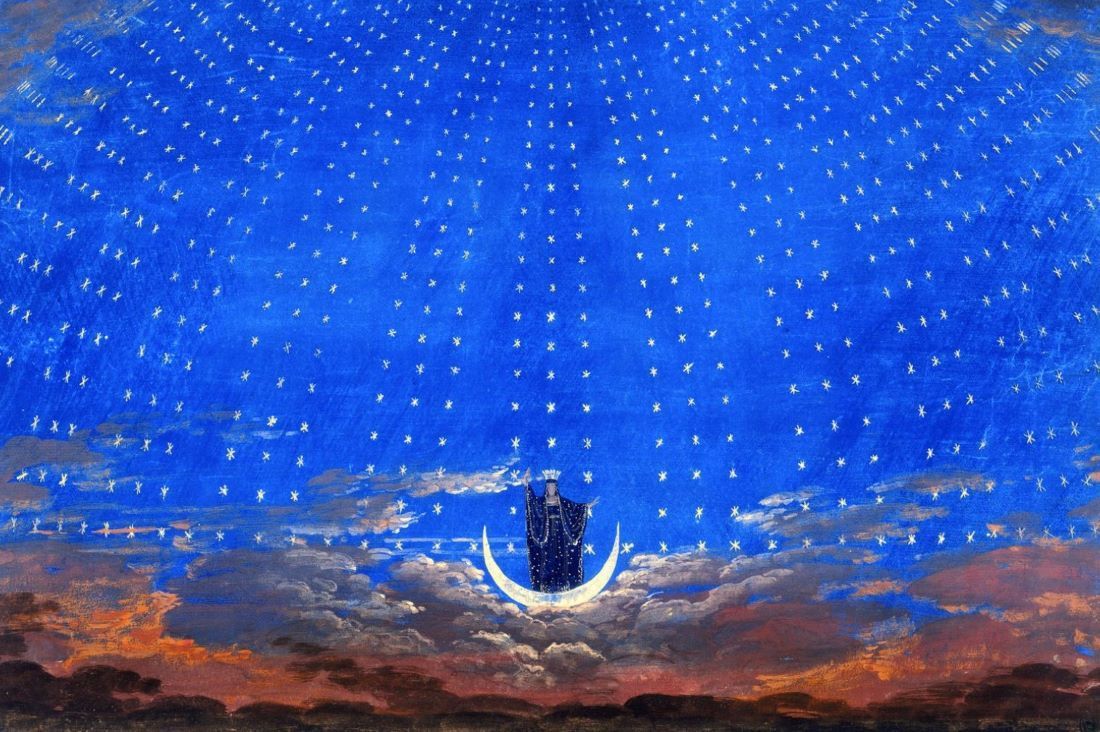







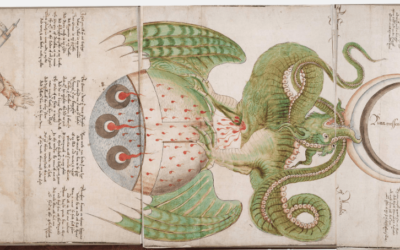


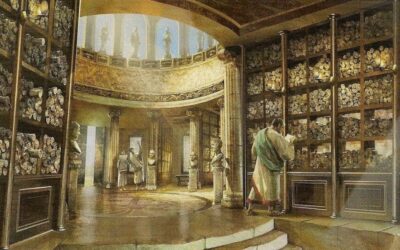





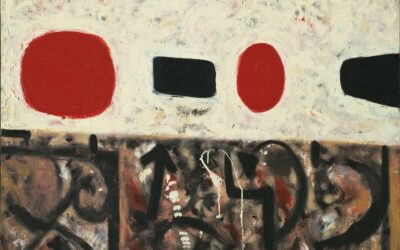




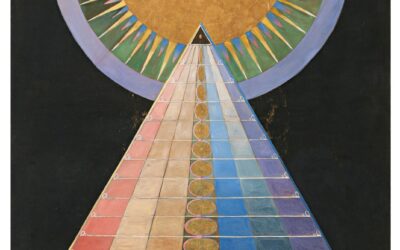



0 Comments